How to Style a Little Black Dress in a Vintage Way

Last updated on June 9th, 2024 at 03:56 pm
- Different Ways of Styling a Vintage & Contemporary Little Black Dress
- The Little Black Dress-How It All Started
- The Little Black Dress Will Make You Feel Like Million Bucks
- The Seductive Black Dress-From Widow’s Weeds to the Streets
- The Woman of England: Their Social Duties, and Domestic Habits.
- The Little Black Dress-Symbol of Independence, Power & Sex.
- How to Style a Little Black Dress the Vintage Way
- How to Style a 1950s LBD
- How to Style a Little Black Dress in the Summer
- Accessories That Will Transform a Little Black Dress
- THE BELT
- THE GLOVES
- THE DETACHABLE COLLAR
- Where to Find the Perfect Little Black Dress!
In this article, I will be sharing with you my tips on the art of styling a little black dress in a vintage way, proving the garment to be the most versatile piece in your wardrobe, as it can be worn for both daytime and evening occasions.
How to style a little black dress with the help of accessories;
- A wide vintage belt will elevate your little black dress.
- Colourful gloves, vintage or contemporary, will make any dress stand out from the crowd.
- Make a statement with a detachable collar to add a touch of extravaganza to your little black dress.
- Jewellery-simple is good, but over-the-top is better and will help transform the most modest LBD into the belle of the ball.
- Vintage Chanel clip-on earrings are always a good idea.
- Flats versus high heels paired with a little black dress.
- Don’t be afraid to experiment with vintage hats.
If like me, you have a penchant for the LBD, you know that it’s the most versatile piece of garment one could have, and it’s also a wardrobe staple.
It can be dressed up or down depending on the occasion. And with minimum effort, by adding a vintage brooch, belt or swapping flats for high-heels, as if with the touch of a magic wand, you can change its entire look.
Different Ways of Styling a Vintage & Contemporary Little Black Dress
The first one is plain and perhaps even slightly unremarkable as a piece from the 1950s. The second one, equally simple and at first glance slightly more elegant than the vintage dress, is a contemporary design.
With the help of a few vintage accessories, I will teach you how to transform a little black dress into a beacon of glamour.
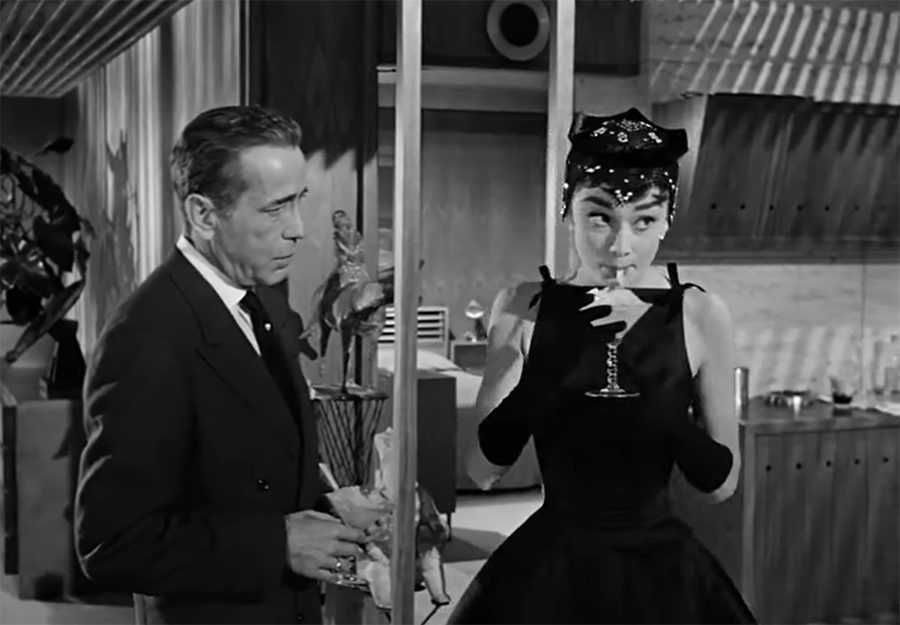
DISCLOSURE: I’m part of an affiliate program, and I get a small commission when you purchase a product through the links in this post. That’s how I keep my website alive, for which I’m very grateful to you. Shopping via my affiliate links comes at no additional cost to you. All opinions expressed here are mine, and I only recommend products I love.
The Little Black Dress-How It All Started
The very controversial Duchess of Windsor, Wallis Simpson, once said,
When the little black dress is right, then there is nothing else to wear in its place.
Wallis Simpson
And I have to agree with her wholeheartedly, as there is nothing more elegant than a little black dress. It’s a real fashion saviour when you need to shift from daytime to evening and flit from one event to another.

Its Parisian chic, lauded by Simpson was the trademark look of Edith Piaf and owes its fame to Coco Chanel. Her Model T (as in Ford) design for a little black dress first appeared as a drawing in a 1926 edition of American Vogue. And while Chanel may have laid down the design principle and made it accessible to women of all classes and financial backgrounds, it was Christian Dior, who gave it drama, and Hubert de Givenchy’s creation for Audrey Hepburn’s character Holly Golightly in Breakfast at Tiffany’s that defined the look forever.
And in case you’ve ever wondered, I would be in the Christian Dior camp, had the opportunity presented itself and I was so lucky to wear an original 1950s Dior dress. Especially if it looked like the one in the middle
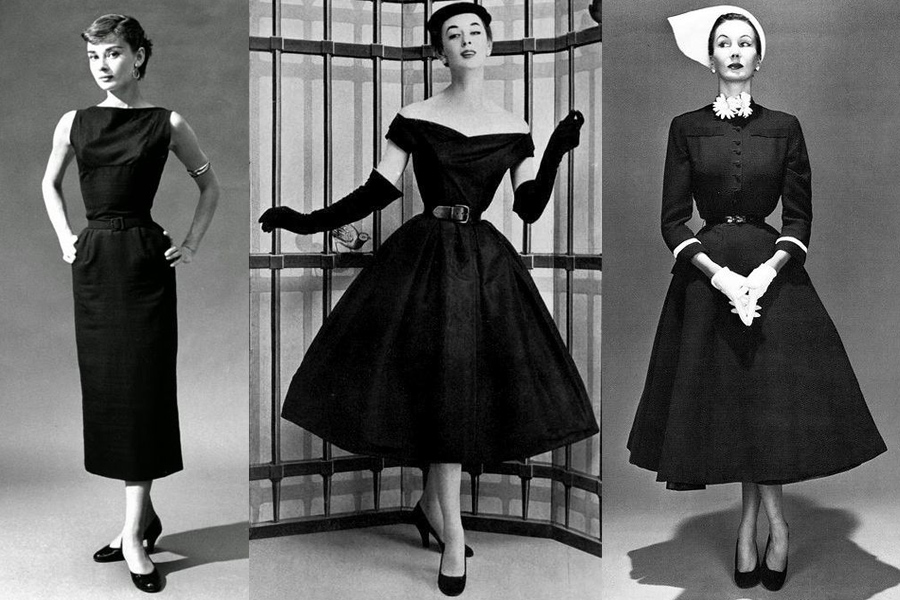
You can wear black at any time. You can wear it at any age. You may wear it for almost any occasion; a ‘little black frock’ is essential to a woman’s wardrobe.
Christian Dior
The Little Black Dress Will Make You Feel Like Million Bucks
We may take it for granted now, but at the time, Chanel’s choice of colour for her creation was bold, although women wore black dresses before the 1920s, and not necessarily because of the mourning tradition.
Chanel certainly cemented the position of a black dress in fashion and by making her design so simple, she made it possible for women on even the smallest budget to feel like a million bucks.
The Seductive Black Dress-From Widow’s Weeds to the Streets

Victorian mourning attire paved the way for the little black dress that became the symbol for women’s liberation, and dare I say, sexual freedom, in the 20th and 21st centuries.
When we look at paintings and fashion plates from the 19th century depicting mourning dresses, it’s fair to say that the clothing worn during bereavement was, at times, more extravagant and beautiful than everyday wear. It was governed by its own rules of fashion. And this explains why black evening gowns were gaining in popularity amongst non-grieving ladies.
Many people felt that it was inappropriate to put so much emphasis on Widow’s weeds. After all, It was impossible, for those on minuscule income to follow the newest mourning fashions.
Sarah Stickney Ellis described it best in 1843, Chapter XII ( Public Opinion-Pecuniary Resources-Integrity.)
The Woman of England: Their Social Duties, and Domestic Habits.
One would suppose, however, on a superficial view of it, that the wearing of black, as a general costume indicative of the absence of festivity or merriment from the bereaved family, was all that had been originally intended by this custom; and that it should thus become an outward testimony of respect and sorrow for the dead. The fashion of the world, however, has imposed upon this custom. (…) So extremely becoming and lady-like is the fashionable style of mourning, that under the plea of paying greater respect to the memory of the dead, it has become the object of ambition to wear it in its greatest excellence; and equally an object of dread and source of humiliation, to be compelled to wear it in an inferior style.
Sarah Stickney Ellis
‘A Widow and her Freinds’ by Charles Dana Gibson
In 1901, one of my favourite illustrators, Charles Dana Gibson, published a series of illustrations depicting a beautiful widow, and her journey of bereavement and recovery.
This is a perfect example of a widow as the forbidden fruit and object of sexual desire.
She is the centre of wanted or unwanted attention from both; men, and women. The first wants her, the latter wants her gone. It’s like Oscar Wilde said,
Some cause happiness wherever they go; others whenever they go.
Oscar Wilde
The widow’s black but very revealing gown emphasised pale skin and the fact that she was unattainable, which made her truly desirable. The forbidden fruit. A beautiful woman of means and sexual experience.
“Some think that she has remained in retirement too long. Others are surprised that she is about so soon.”
Here, you can buy the original 1901 edition of the ‘A Widow and Her Friends‘ booklet.

As a Goth, I find the black dress against pale skin, incredibly erotic and judging by the fascination of the Victorians with death, I think many of them would have agreed with my ideal of beauty, corseted pale beauty that is.

Black Was no Longer the Colour of Mourning
The strict rules of mourning etiquette ceased to exist with the start of WWI. After all, everyone was grieving the passing of a family member or a spouse. A black dress was no longer associated strictly with widow’s weeds.
Even though black is often used as a symbol of death, mourning as well as witches and magic, for me, it represents elegance, power and individuality. Also, as an old-school Goth, I’m rather thrilled that it’s associated with darkness and Victorian mourning attire.
That also explains my fascination with 19th-century mourning capes which I have in abundance. It’s the preferred attire colour of a Femme Fatale, and if you are curious about her history in 19th-century paintings, Film Noir and 1930s-1040s Fashion, I suggest you read my article on How to Dress Like a Femme Fatale.

The Little Black Dress-Symbol of Independence, Power & Sex.
The little black dress is a true classic. It gave noir to the films of Rita Hayworth as Gilda, Joan Crawford, Veronica Lake and Lana Turner, to name but a few. And its simple elegance never goes out of style.
In the picture on the right, I’m wearing my favourite little black dress from the 1940s. And how similar is it to Joan Crawford’s dress in the picture on the left? I call it the understated chic.
What makes the dress so perfect are the beautifully proportioned padded shoulders, adorned by velvet detail on the sharp collar, and sash, that no accessory in the world could do justice to.
In this instance, all that’s required are red lipstick, and perfectly manicured nails, preferably in ‘Jungle Red”. And if you are familiar with The Women from 1939, you will get the reference.


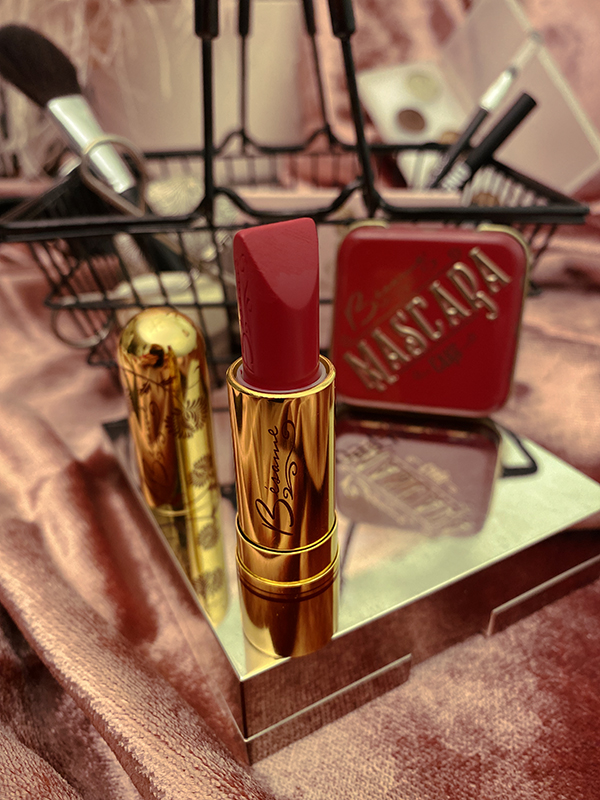
Don’t forget about the perfect red Lipstick to go with your perfect little black dress.
The sexiest shade of red by Besame
Enjoy 25% off the entire order!
How to Style a Little Black Dress the Vintage Way
How to Style a 1950s LBD
I chose a 1950s little black dress to show you how to style it in different ways. The same rules apply to any other vintage or contemporary attire.
When people say that the devil is in the details, I always respond that the devil is in accessories. With the help of a 1950s black patent belt and olive leather gloves, I turned the dress into an outfit suitable for lunch with friends, a date or a cocktail party.

I hope you’re enjoying my tips on how to style a little black dress in a vintage way.
Black is the epitome of elegance and sophistication. It flatters all body shapes and seamlessly combines with any colour palette. By opting for vintage black clothes from head to toe, you create an effortlessly stylish ensemble that never fails to make a bold statement.
The 1940s All Black Look
- 1940s jacket
- 1950s Handmacher skirt
- 1950s Garay purse
- Luna Wolford tights
- An antique cameo

Women think of all colours except the absence of coloour. I have said that black has it all. White too. Their beauty is absolute. It is the perfect harmony.
Coco Chanel
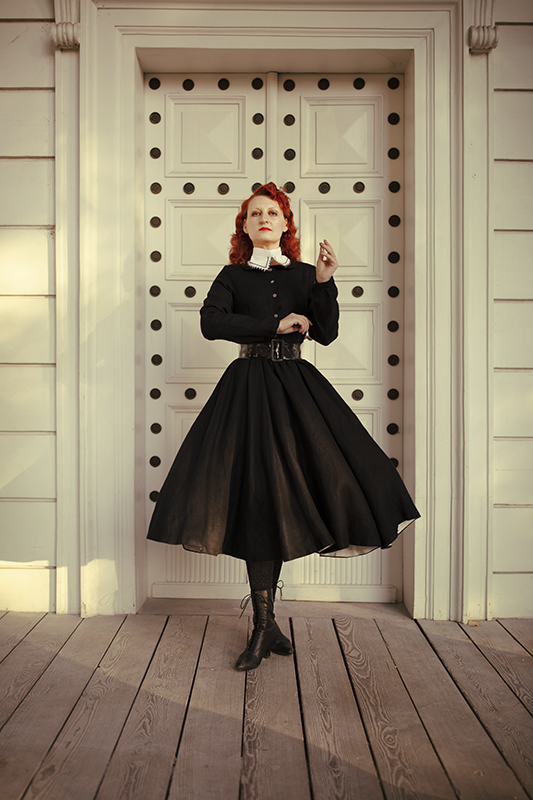
Simple, and yet, very elegant little black dress from the sustainable brand Son de Flor.
The Perfect Vintage-Inspired Classic Dress in Black by Son de Flor is Suitable for All Seasons!

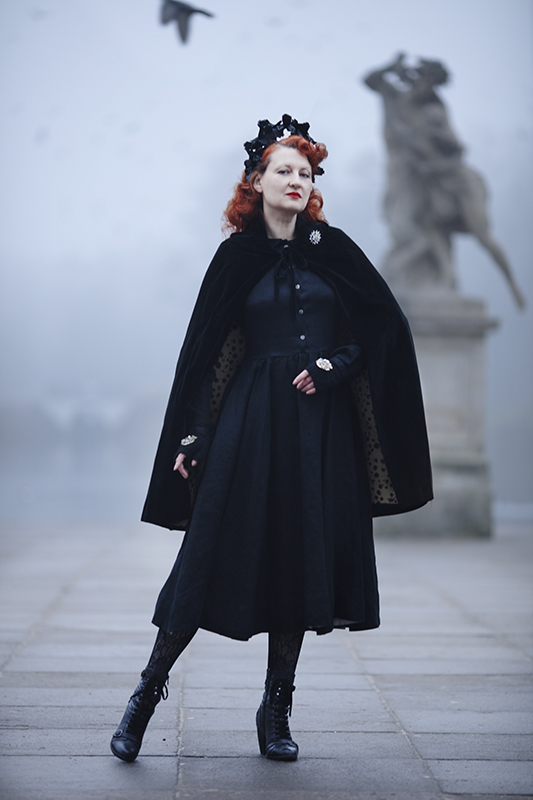
I have been for forty years discovering that the queen of all colours was black
Pierre-August Rnoir

Black is modest and arrogant at the same time. Black is lazy and easy but mysterious. But above all, black says this: I don’t bother you, don’t bother me.
Johji Yamamoto
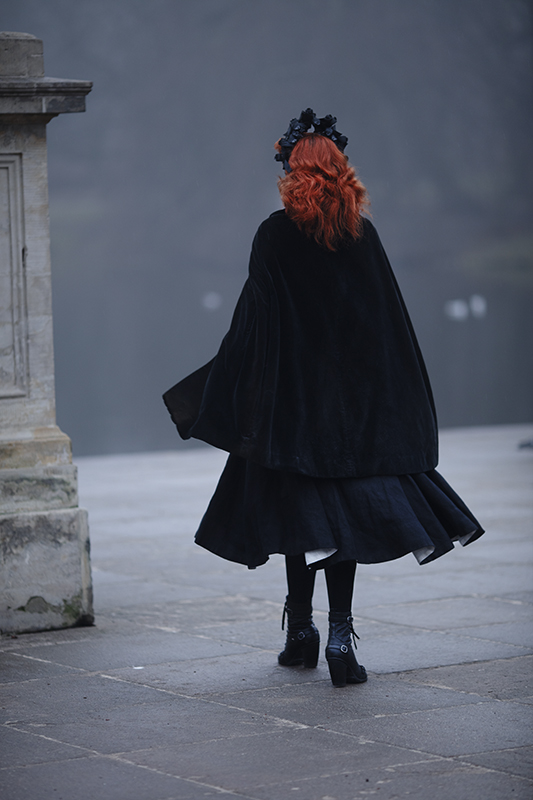
Embracing the all-black vintage look means embracing the past and the enduring elegance of classic fashion.
It’s certainly a fashion statement that has stood the test of time and it provides a versatile canvas to express one’s unique style while paying homage to the fashion icons of the past. In my case, it’s Joan Crawford. And the best part is a style that can be adapted to suit any occasion, whether it’s a formal event or a casual day out.
How to Style a Little Black Dress in the Summer
The Diane dress from Son de Flor is a charming and elegant piece that has stolen my heart. The dress is crafted from an incredibly light and breathable linen fabric, which makes it an ideal choice for the warm summer months. To add an extra touch of sophistication, the dress features beautiful puffed sleeves that lend a timeless quality to its overall aesthetic. To complete the look, pairing it with a vintage slip would be a smart choice. In summary, the Diane dress is a stunning and versatile garment with a Gothic twist.



Accessories That Will Transform a Little Black Dress
THE BELT
- A wide patent belt, like the 1950s one I used here, is the perfect accessory to add some sex appeal to a plain black dress. It also emphasizes the waist beautifully. In case you are new to my blog, and for full disclosure, I often wear the CS 201 Orchard Corset waist cincher under vintage clothes, and the little black dress was no exception.
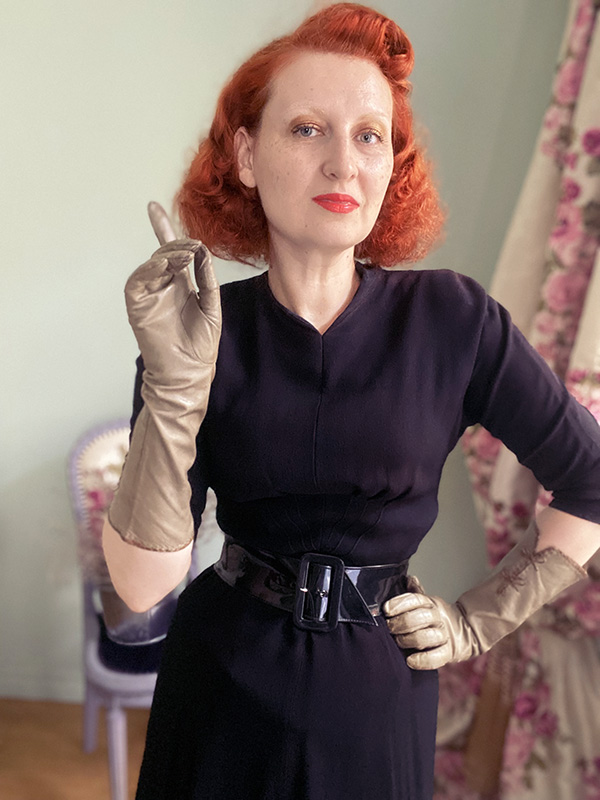

If you wish to draw attention to your midriff, I suggest that you experiment with different colours when choosing a belt. Green, red or purple would look incredible against the sumptuous black fabric.

Here is how I styled a contemporary little black dress by Talbot Runhof, which I borrowed from my mom’s closet, with the same 1950s belt.
THE GLOVES
The 1950s purple suede gloves look like a statement piece against black clothes.
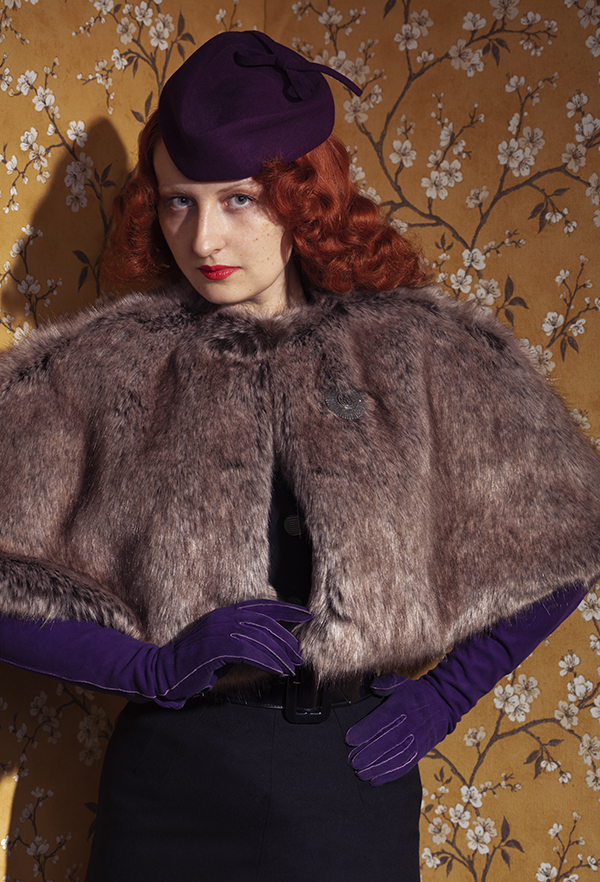
2. I’m an ardent collector of vintage gloves because they are an integral part of any vintage outfit regardless of the season. They also look incredible paired with an LBD, vintage and contemporary.
The statement elbow gloves, leather or suede, will add a lot of va-va-voom to your outfit. And don’t think that they are reserved for a night at the opera because the strict glove etiquette from the 19th century is no longer valid.
When looking for gloves, follow your own taste when choosing the colour, fabric and length. Are you familiar with the saying that something fits like a glove? Make sure they are not too snug, or you will damage them, and not too big because they will not look right.
THE DETACHABLE COLLAR

z
Every girl needs a little black dress.
3. As much as I love silk scarfs because they are so effortlessly chic, and require little effort on the part of the wearer, I find detachable collars much more glamorous and fun. They make for the perfect accessory for the little black dress and are suitable for the day and evening.
The Makeup
Besame eyeshadows are perfect for the day-to-night look!
Enjoy 25% off the entire order!


And for those of you who can’t imagine an outfit without a scarf, I suggest something unique, like the Abbie Walsh necktie.

This is a tribute to my favourite painter, Tamara de Lempicka. In the picture, I’m wearing an Abbie Walsh necktie paired with a 1950s hat.
JEWELLERY

You can never go wrong with a (faux) pearl necklace, ostentatious costume jewellery, and, of course, Chanel clip-on earrings.
Let your imagination & budget be the guide in your choice of statement jewellery, and remember, that you don’t have to spend a fortune on bijouterie. I would rather buy a 1950s Coro brooch embellished with rhinestones than something contemporary adorned with diamonds.


SHOP CHANEL CLIP-ON EARRINGS
FLATS OR HEELS?
There is no right or wrong answer. You can wear high heels with a little black dress in the evening and flats during day time, or vice versa. The one thing I would note is that flats should look as if you chose them because they look like a work of art, and not simply because they are comfortable.

And remember,
One is never over-dressed or underdressed with a Little Black Dress.
Karl Lagerfeld
Where to Find the Perfect Little Black Dress!
The fastest way to find any vintage garment, accessory or the perfect 1950s little black dress is through the GEM app. In the pictures, the fantastic lady with an extraordinary style, co-founder of my favourite vintage shopping app, Liisa Jokinen.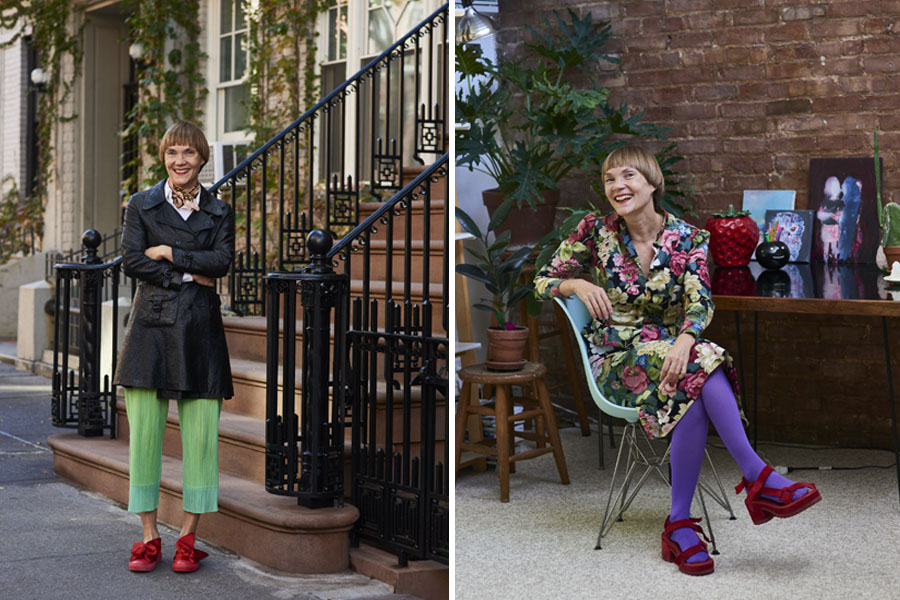
The beauty & power of a little black dress lies in its simplicity and versatility. You can wear it to breakfast, lunch or dinner.
If you enjoyed the article, please support the It’s Beyond My Control blog by donating to my book fund. THANK YOU!






